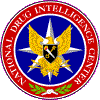
|
National
Drug Intelligence Center Chicago High Intensity Drug Trafficking Area Drug Market Analysis May 2007 OutlookThe Chicago HIDTA region will remain a national-level transshipment and distribution center for illicit drugs available locally and in many Midwest and eastern markets for the foreseeable future. The high population density, transportation infrastructure, and ethnic diversity of the Chicago region provide a fertile venue for drug traffickers to exploit. Particularly because of the large Hispanic population in the region, Mexican and Colombian traffickers are able to blend into the population base to distribute illicit drugs. Additionally, because of the urban milieu, African American street gangs and Hispanic street gangs will continue to flourish and provide midlevel and retail-level outlets for illicit drugs. Although many successes have been achieved through multiple law enforcement initiatives in the region, current resources are insufficient to meet the massive threat posed to the region by the trafficking and abuse of illicit drugs. As a result, it is unlikely that Mexican DTOs and criminal groups, the principal transporters and wholesale distributors of illicit drugs, will significantly alter their methods of operation in the region, and their dominance will remain unchallenged by other organizations. The city of Chicago will remain the principal marketplace for illicit drugs in the region; however, drug distribution in suburban areas of the region will quite likely increase, particularly distribution by street gang members. Street gang presence has emerged in many communities that lack the law enforcement resources necessary to effectively address the presence of street gangs. As a result, the availability and abuse of illicit drugs as well as gang-related violence will most likely increase in these communities. An increase in the availability and abuse of ice methamphetamine in the Chicago HIDTA region is unlikely. However, any such increase would have a devastating impact on the already overextended law enforcement and treatment resources in the area. Mexican DTOs and criminal groups have the potential to generate significant illicit profits from the distribution of methamphetamine, which they themselves produce in superlabs in Mexico and southern California. It is unlikely that street gangs in the city will be receptive to distributing methamphetamine because of the high profitability associated with crack cocaine sales--crack users often purchase the drug multiple times a day, whereas methamphetamine users need a "fix" much less frequently. If an increase in methamphetamine availability were to occur, it would most likely be through the distribution of the drug by Hispanic gangs in suburban communities rather than in the city of Chicago. The emergence of clandestinely produced fentanyl and heroin/fentanyl combinations poses a significant threat to the region because of relatively low retail heroin purity levels, abuser demand for the heroin/fentanyl combinations, and the possibility of violent confrontations as suppliers compete to meet the demand. Compounding the problem is the relative ease with which fentanyl can be produced using recipes available on the Internet as well as the possible diversion of the licit form of fentanyl. |